Surrounded by creativity from an early age, Maggy Hiltner grew up in a family where making things was just a way of life. Today, she transforms vintage textiles and discarded embroideries into deeply layered, hand-stitched works that blend humor, nostalgia, and social commentary. Her art gives new life to forgotten fabrics—each stitch telling its own imperfect, beautiful story.
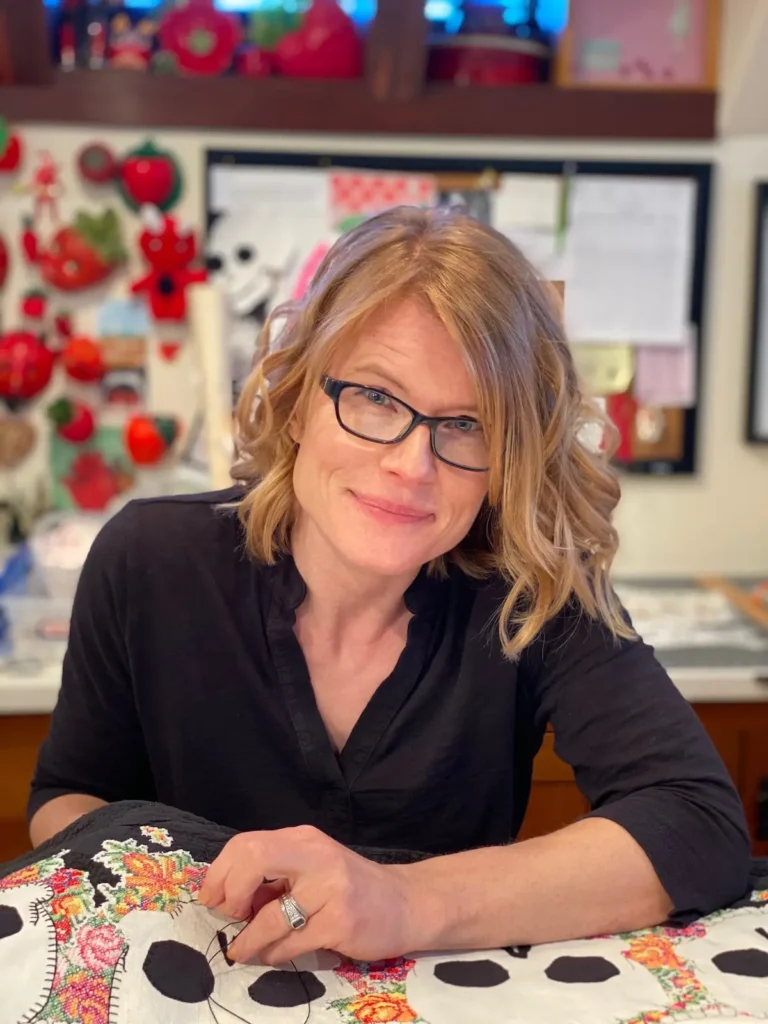
When did you first realize you are a creative person?
I come from a family of makers: my mother and grandmothers needlepointed pillows, made quilts and stitched or knitted our clothes and toys; my father built odd things and cooked outrageous meals and painted murals in our home.
Elaborate costumes, odd handcrafted décor, quirky gardens, and over-the-top school projects were all the norm. I just took being handy and creative for granted—if we could dream it up, we went ahead and made it.
There were occasional kitchen disasters or droopy fabric failures, but these were met with laughter, and imperfection was expected and embraced.
As an Amazon Associate I earn from qualifying purchases. Read more about our affiliate linking policy.
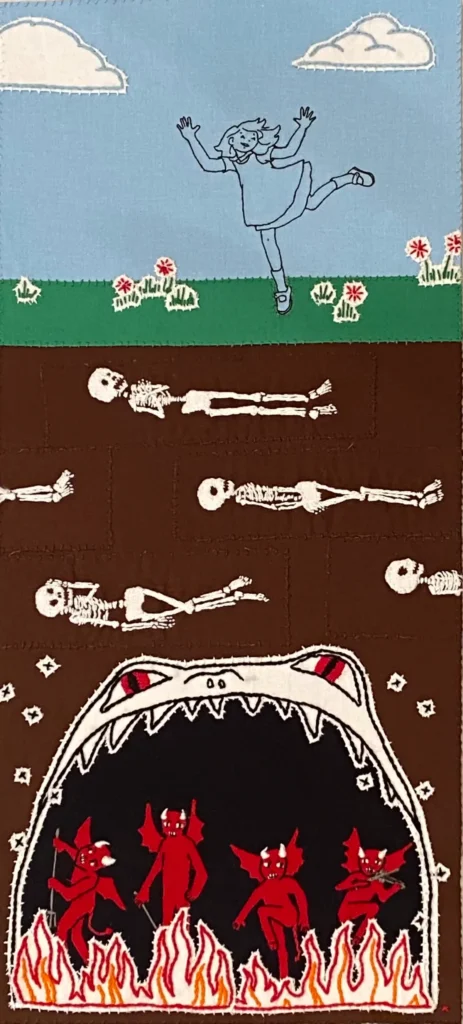
How did you find yourself on an artist’s path?
I fully committed to art in college. At Syracuse University I chose the Sculpture program because it had the most tools and toys and open ideas about materials.
I spent much of my time in the Fibers department because of the strong female professors there and my natural affinity for weaving, dyeing, sewing, and basketry techniques.
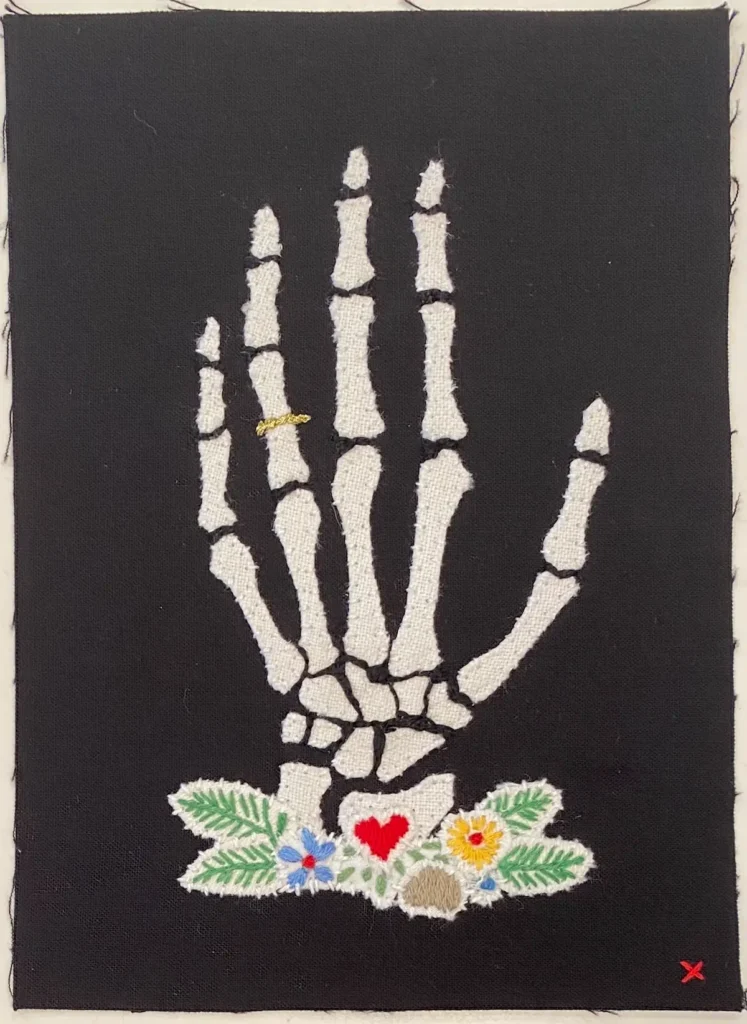
How does your formal art education help your work develop? Does it ever get in the way?
I appreciate my fine art training and its emphasis on concepts and art history. It plays well with my scrappy creative upbringing.
I like to learn the “rules” then break them: to play around with the capacity of an art technique, genre, or material.
My college education, as well as my time at Arrowmont School of Arts and Crafts serving as a Studio Assistant, helped me cultivate the folkart and craft traditions of attention to material and decorative beauty, as well as contemporary art practices of social commentary and narrative.
Tell us more about your passion for vintage textiles. How do they influence your work?
My work often responds to my location. I began working in found materials out of necessity as a student, and the practice of it stuck. When I lived in Wyoming, I collected homesteader fabrics– white and off-white, lots of mending, stains, and old handmade garments. When I moved to Kansas, I found a lot of kitchy, brightly-colored embroidery that really spoke to me and my sense of humor–I have kept that aesthetic for a long time.
Everywhere I go I scour the antique shops and thrift stores for embroidery and tattered quilts. I collect mainly flowers and foliage and am especially drawn to odd anthropomorphic animals and household objects.
I’m not buying museum-worthy heirlooms, I’m buying the stained and over-used bits. There’s a sadness to second-hand stores, and for me, especially in the handwork—the many hours that were devoted to stitching these now discarded treasures. In using these found bits and pieces in my work, I’m giving them a new life, a way to be precious once more.
People who meet me at a gallery or visit my studio often return with bags of old linens and worn out quilts that they’ve had stashed in a closet or stuffed in a drawer. As long as they’re OK with me cutting them up, I’ll try my best to get their grandmother‘s stitches on the wall of a museum or gallery.
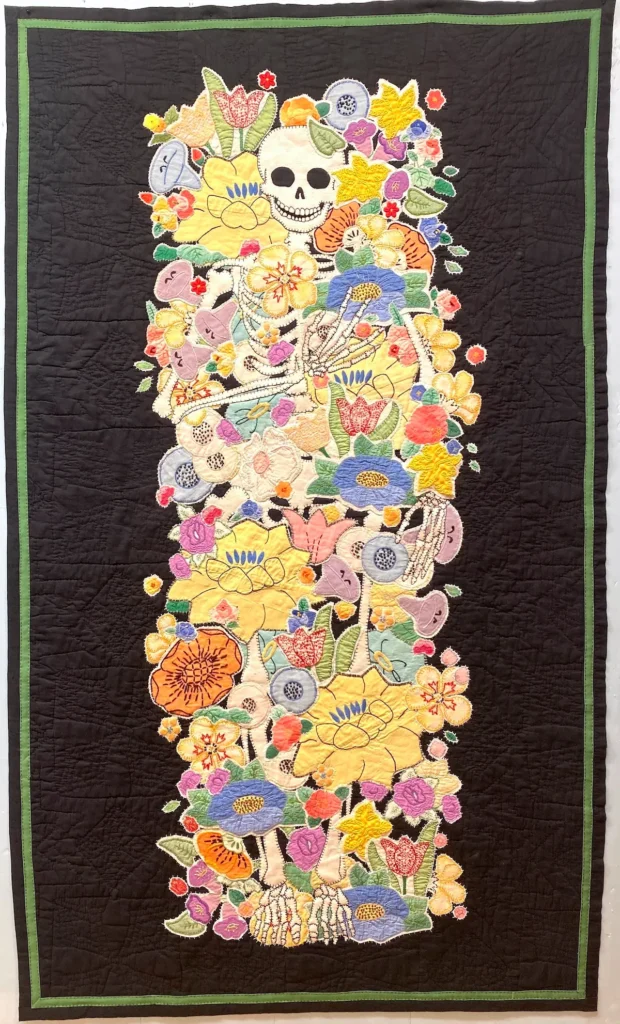
Do you work actively on more than one project at a time?
I work on multiple projects at the same time. I’m constantly making little sketches of ideas, and these end up in little piles and from those a body of work starts to emerge.
I’ll develop those sketches more fully–color them in, change them a bit and when I’m ready, I’ll grab one of those and try to make it in embroidery or as an appliquéd quilt.
Multiple things in multiple stages help me not get stuck, and it helps with the health of my hands — I’m not stuck in one repetitive motion for too long– sometimes I’m cutting, sometimes I’m ironing, sometimes I’m stitching, sometimes I’m just sliding things around on my work surface trying to figure out how they go together.

Scraps. Saver? Or be done with them?
I try to use every bit of my found materials. I cut the hand-stitched embroidery off old linens: tablecloths, dresser scarves, antimacassars, doilies—things that were once so common in households and are now rarely used.
I save the hand-tatted edges for some future project, and I use the rest of the linen as the foundation and backing of other projects.
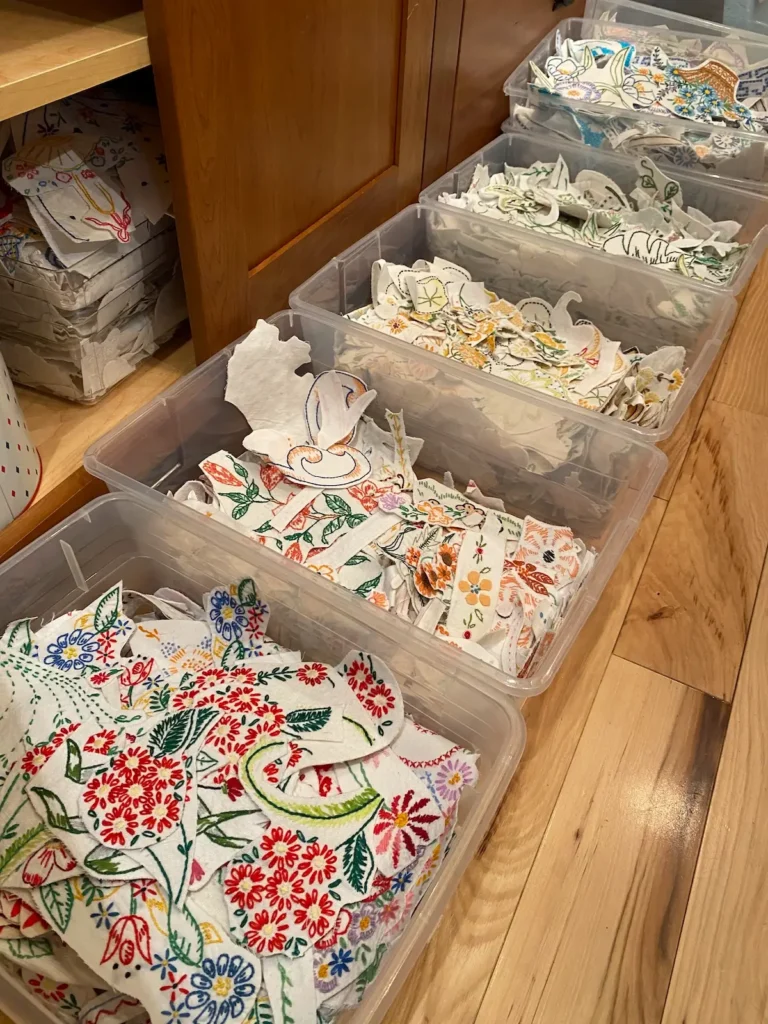
How do you utilize and organize your found fabrics and materials?
I layer my found embroidery with fusible adhesive, then another layer of scrap white fabric (for opacity) and finally a back layer of fusible so the embroidered bits are iron-on patches ready to be collaged.
I sort all these by color or by theme: like a bin of butterflies or a bin of words. When I’m in the middle of a project, these bins are all over the studio, ready to be picked from.
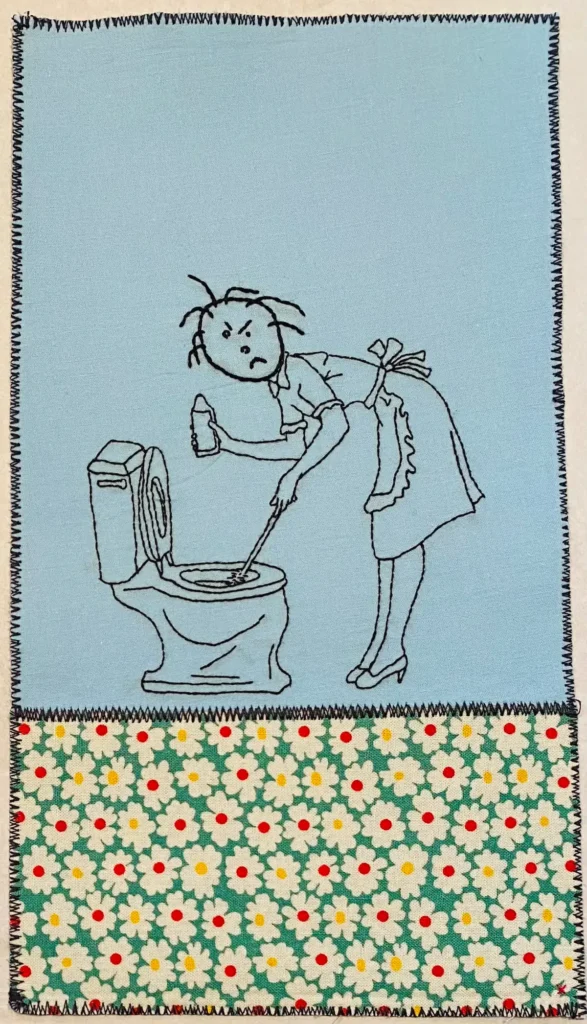
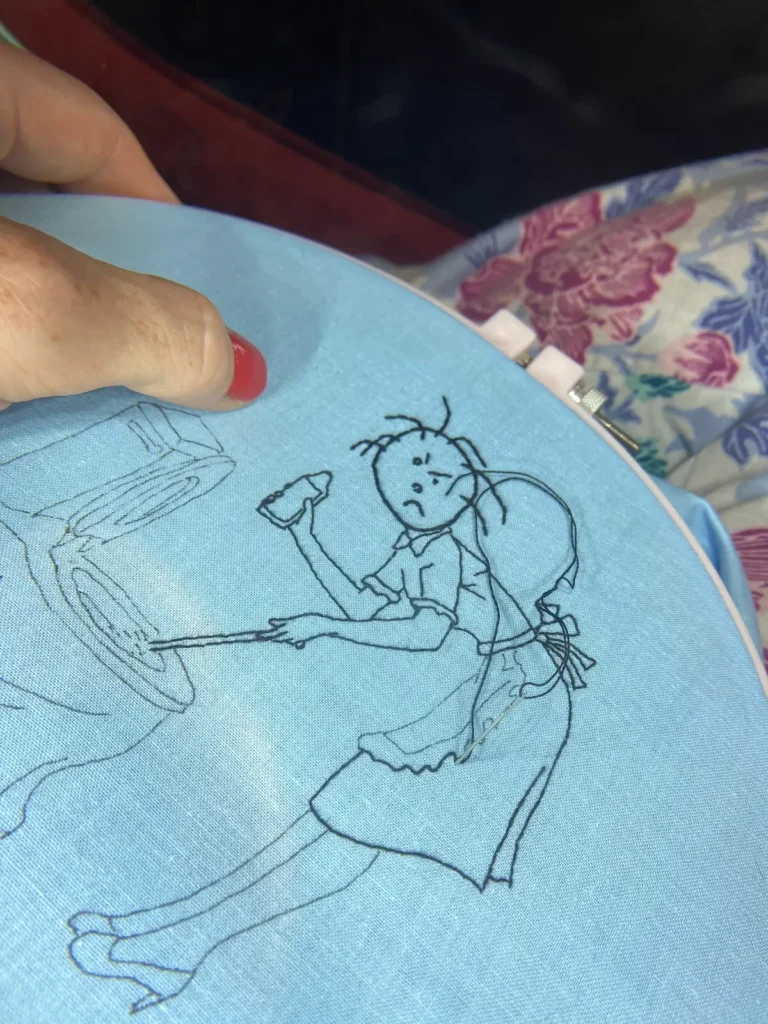
How has your work evolved over the years?
More than twenty-five years ago, my professional work began as small, collaged embroideries depicting scenes of emotions and interactions. Those scenes grew and expanded to whole walls, then whole rooms of embroidery. I try to push myself in scope and scale within my medium.
My early work featured storybook-style characters that acted out vignettes about emotions. When my scenes were too racy for Dick and Jane to act out, I created animal avatars based on my children’s drawings.
When I was in the thick of raising two young children, I created the Mad Mom series. Lately, I’ve turned to the skeleton as my universal human figure. And I’ve been working on alternative representations of the human figure.

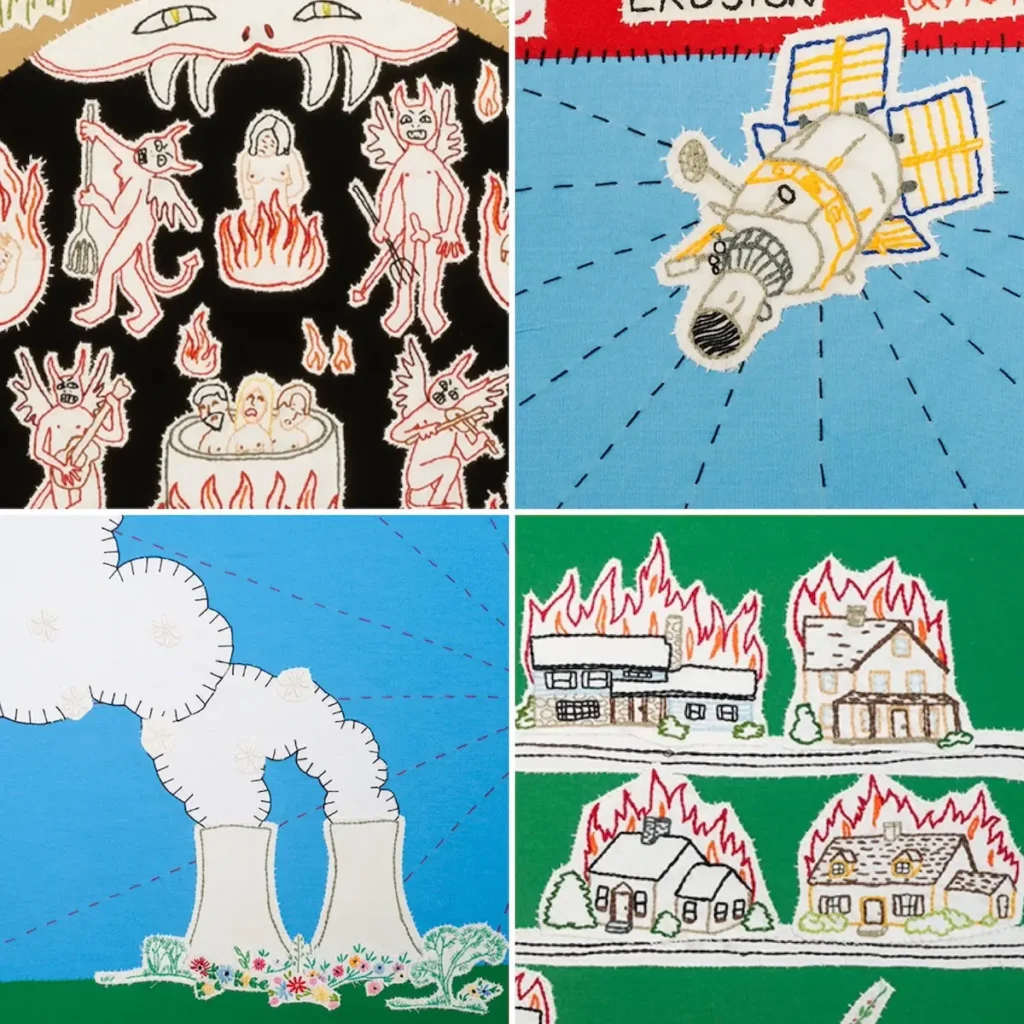
Is there a common thread (pun intended!) across the years?
A common thread that has always been part of my evolving work is hand-stitching.
I love to see a human mark on things, like a signature or a thumbprint, and I like how a stitch keeps time.
A viewer can see my time and intention when they see all the stitches, both mine and the collected ones. I like my work to be a little wonky, a little tattered, a little imperfect: obviously handmade.

Where do you find inspiration for your designs?
Sometimes my work is politically and historically engaged. I research found quilts and then repair, embellish, and comment on the pattern’s meaning and associations with embroidered imagery. I’ve tasked myself with questioning the artifacts of my culture by changing their context and content.
Other times, my quilts and embroideries are more personal or biographical, pondering mortality, exploring relationships, and reflecting psychological and parapsychological states. I look at old storybooks and classical art to help me draw figures.
My images can appear whimsical or vibrantly happy but on closer inspection are not quite so. Sometimes it’s a malicious undertone to the relationships, or a lack of self-control on the part of the characters, or maybe an otherworldliness hidden in the everyday. I like how this subtext works against the comfortable medium of fabric and stitching.
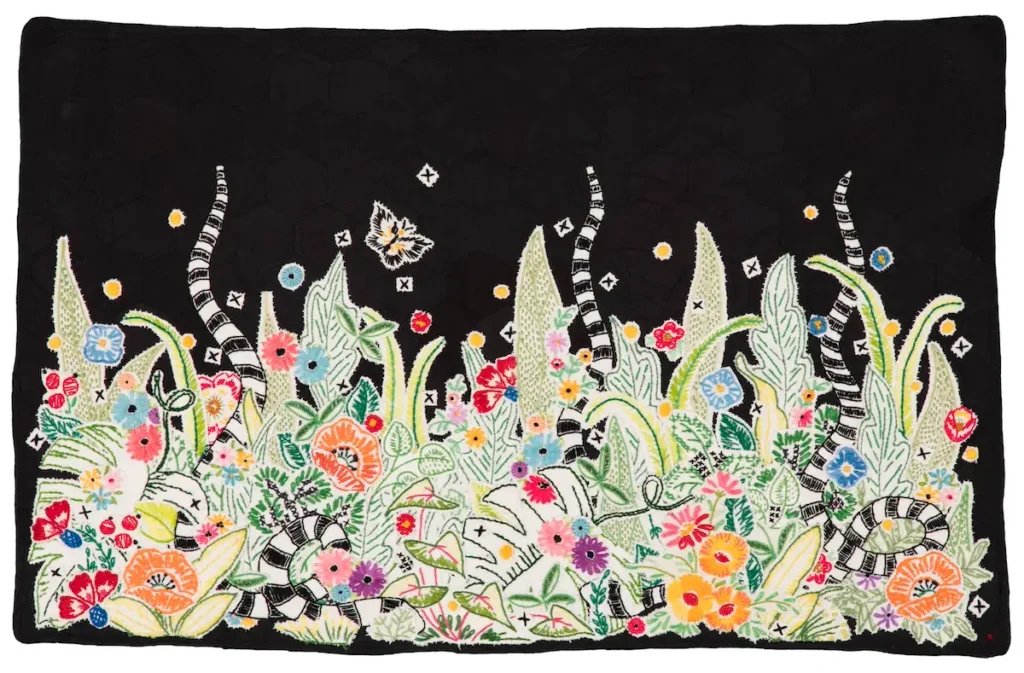
Do you teach? Are there other projects you are working on?
I teach Intuitive Raw-Edge Appliqué and Embroidery Collage workshops in conjunction with my exhibitions at museums or galleries. In Summer 2026, I’ll be teaching at Arrowmont School of Arts and Crafts in Gatlinburg, Tennessee. https://arrowmont.org/
I still make sculptures as well as flat art. These can be seen on my website.
I’m the Exhibitions Coordinator for my Montana/Idaho region of SAQA https://www.saqa.com/regions/montana-idaho, and I coordinate the Red Lodge Art of Resistance, bringing socially engaged projects to my community. https://www.maggyhiltner.com/red-lodge-art-of-resistance
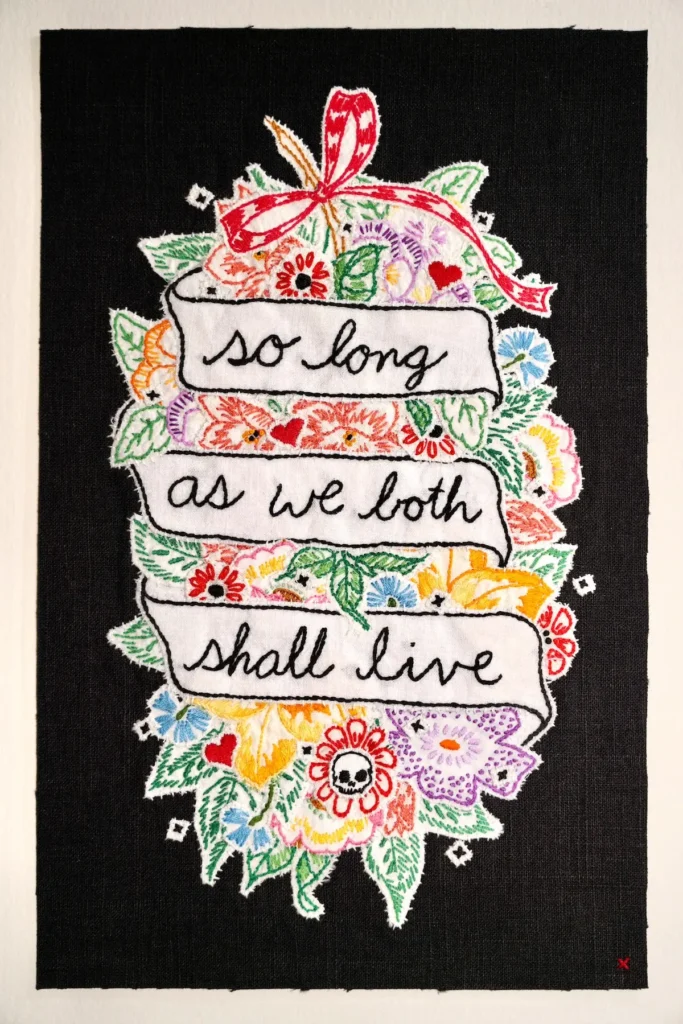
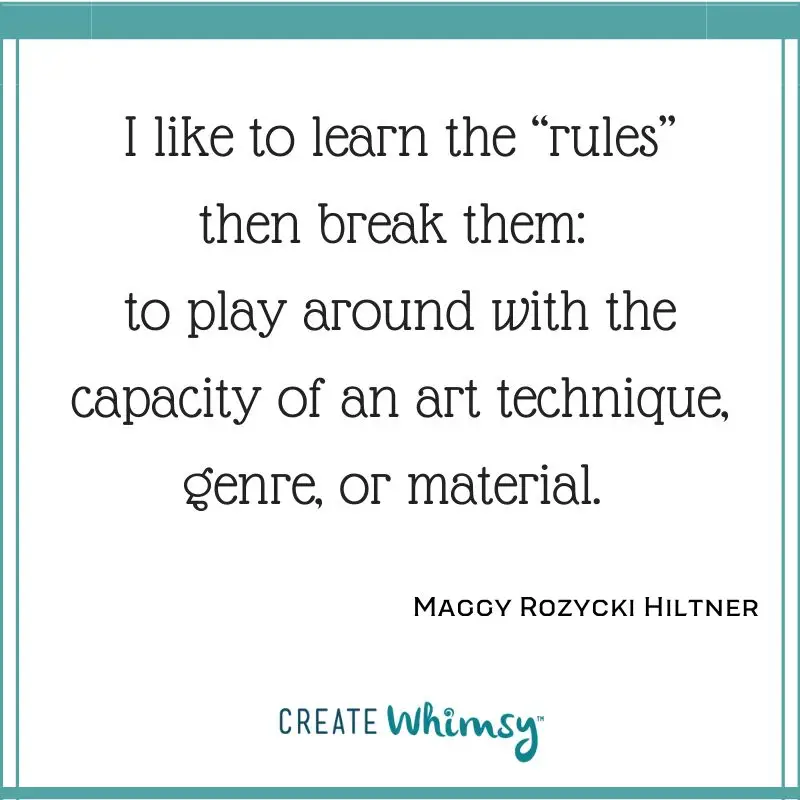
Where can people see your work?
My website is https ://www.maggyhiltner.com/ there you can find lots more images and links to info and current exhibitions.
Instagram @maggyhiltner
Facebook maggy.hiltner
Radius Gallery https://www.radiusgallery.com/
Interview posted October 2025
Browse through more embroidery inspiration and projects on Create Whimsy.

